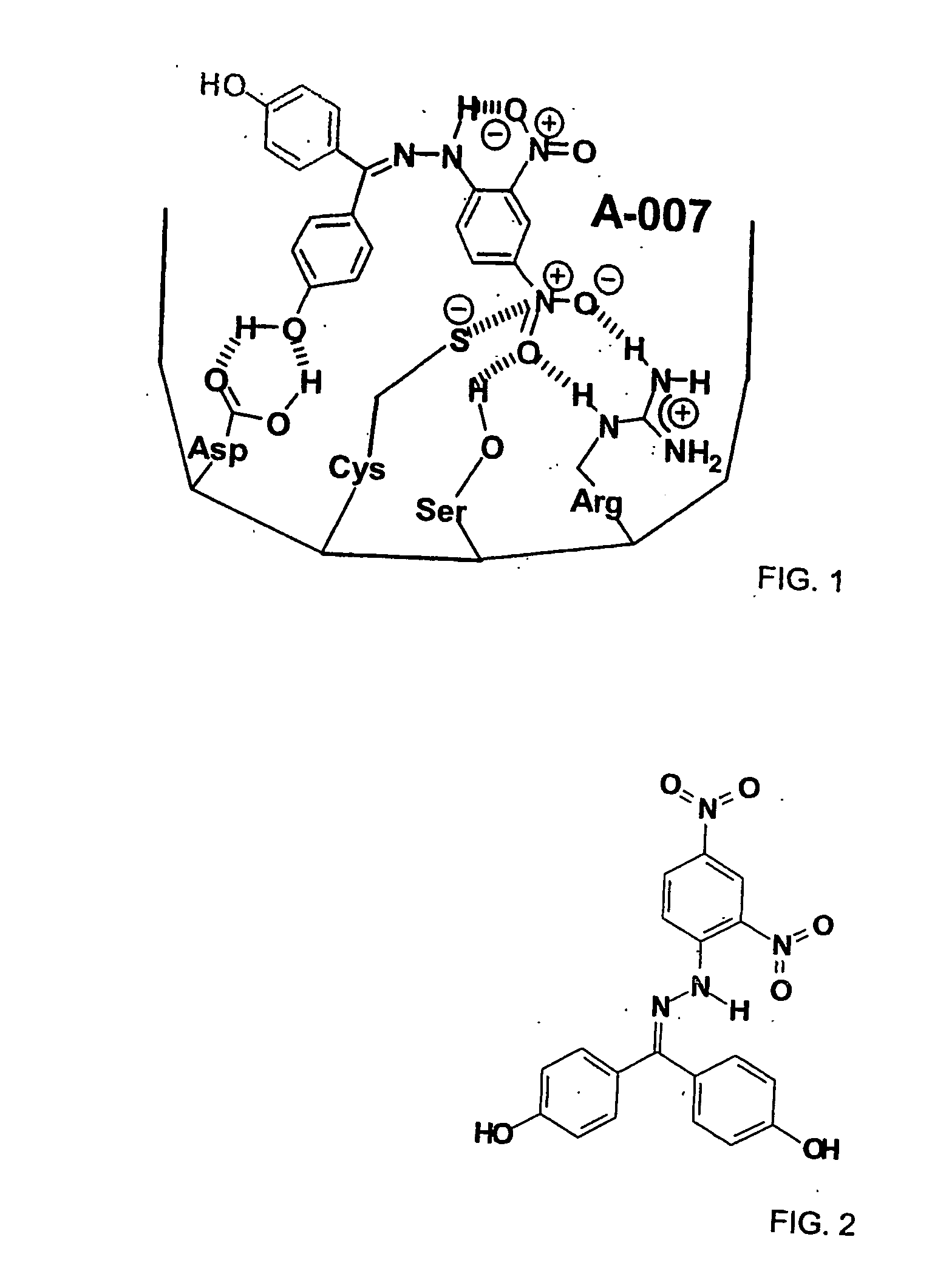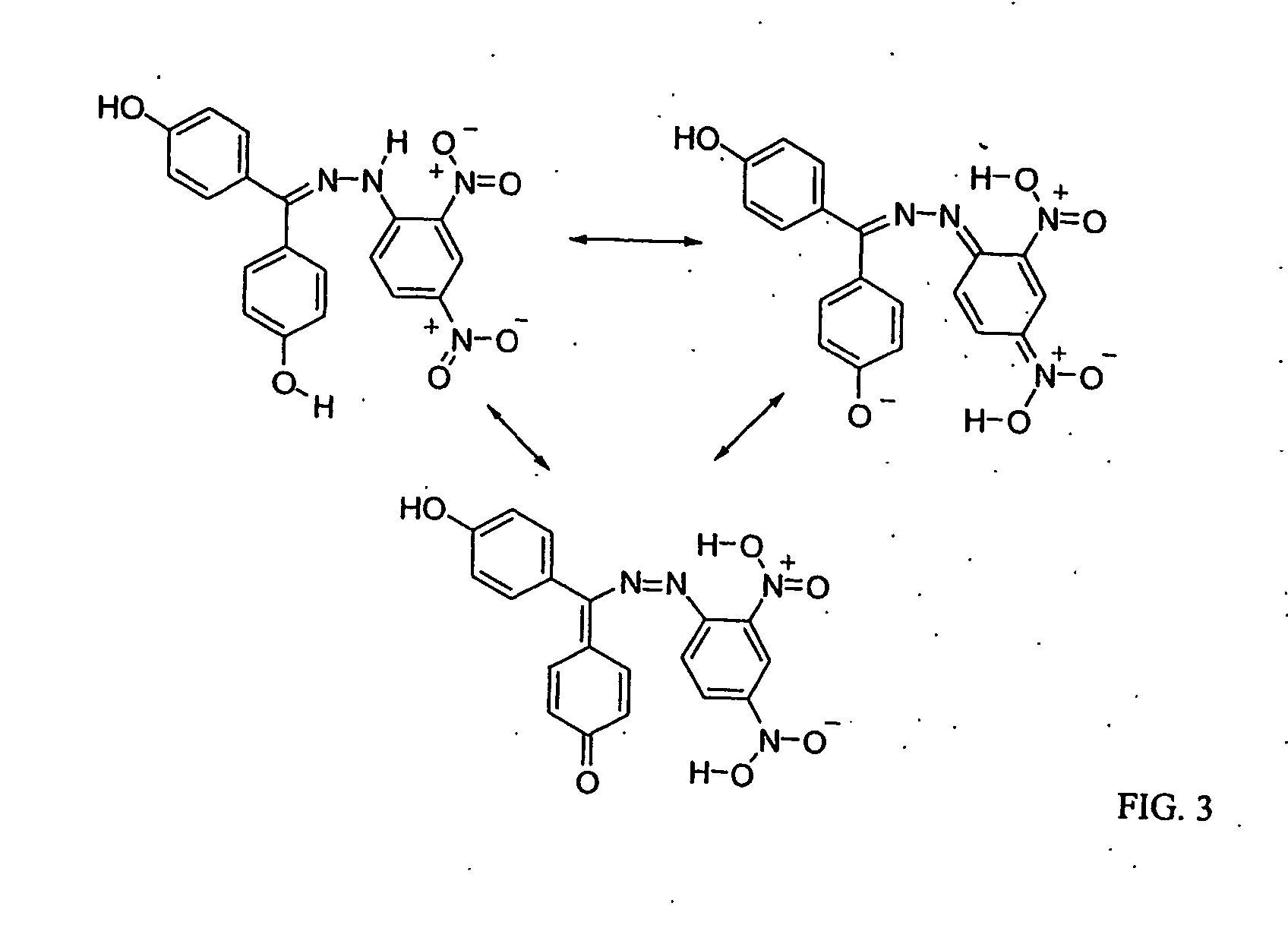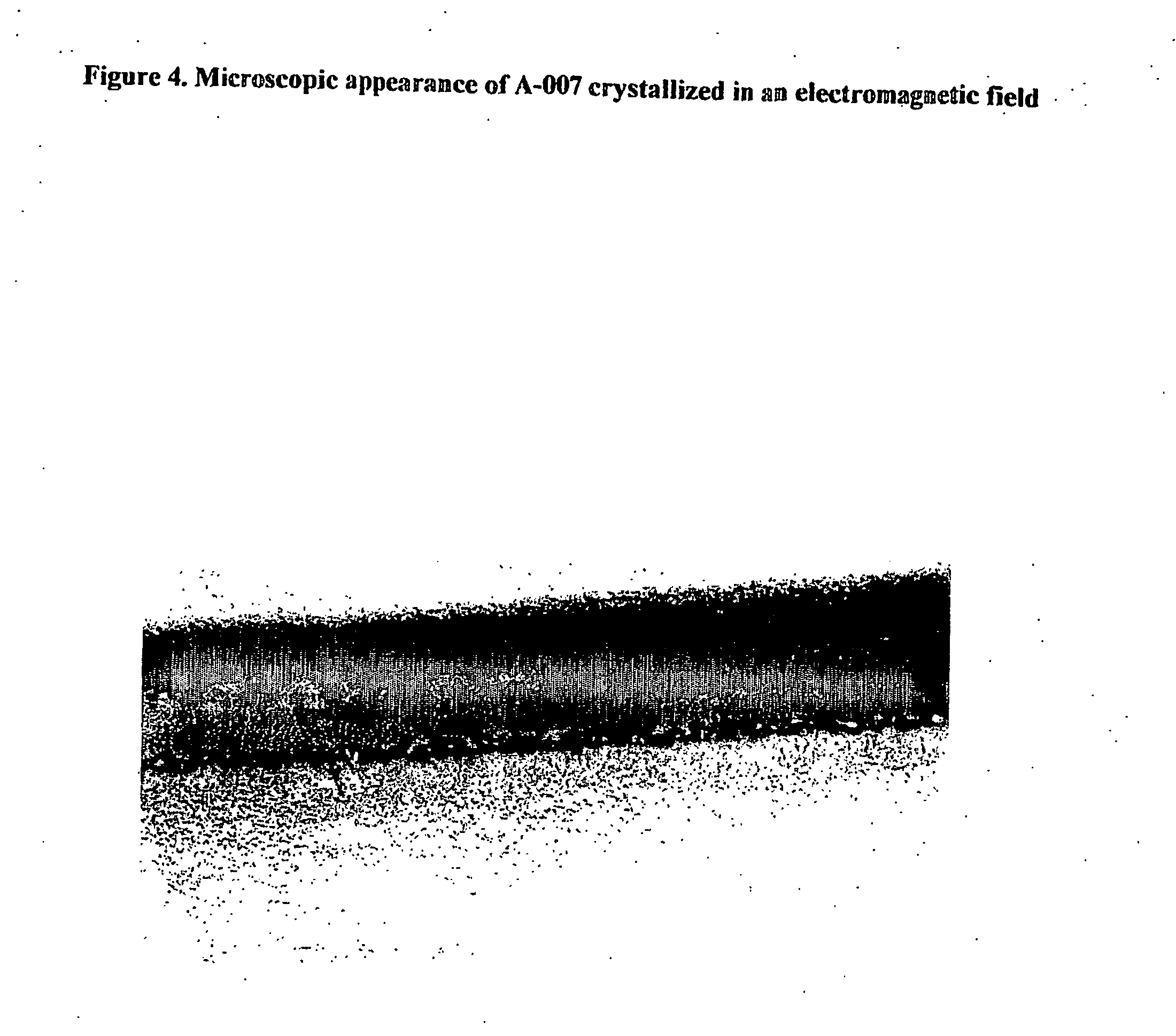Resonance modulator for diagnosis and therapy
a resonance modulator and diagnosis technology, applied in the field of immunological monitoring and altering immune function, can solve the problems of difficult to take advantage, unwanted and potentially damaging heating of biological tissue, etc., and achieve the effects of enhancing immune function, enhancing resonance modulation of compound, and reducing number or function
- Summary
- Abstract
- Description
- Claims
- Application Information
AI Technical Summary
Benefits of technology
Problems solved by technology
Method used
Image
Examples
example 1
Resonance Modulation with Phenylydrazones
[0102] A variety of compounds are disclosed in this Example that are capable of acting as immune modulators. A particular suitable substance(s) having both modulating and sensor properties is a polyaryl mononitro- or dinitrophenylhydrazone such as
wherein R1 is hydrogen, hydroxy, 2- or 4-hydroxyphenyl, acetate, phosphate, azido, nitrile, amino, dimethylamino, sulfate, methylsulfonate, phosphate, nitroso, succinate or another water soluble electrophilic group capable of hydrogen bonding; R2 is C6H5, C6H4OH, C6H4N3, C6H4CN, 4-HO—C6H4—C6H4, C6H4OPO2OH, C6H4OSO2H, C6H4NH2, C6H4NHMe2, C6H4OSO2Me, C6H4OCO(CH2)xCO2H, or C6H5Cl; and X is C6H3-2,4(NO2)2, C6H4-4(NO2), C6H4-3(NO2), or C6H3-2,4(NO2)2.
[0103] As illustrated in FIG. 3, these chemical structures are able to resonante through multiple dipolar configurations of conjugated electron rich / poor areas that allows / permits migrating intermolecular hydrogen bonding, as well as nucleophilic / electro...
example 2
Anti-Neoplastic and Immune Modulating Characteristics of 4,4′-Dihydroxybenzophenone-2,4-dinitrophenylhydrazone (A-007)
[0109] 4,4′-Dihydroxybenzophenone-2,4-dinitrophenylhydrazone (A-007, compound 1 in FIG. 12), has produced significant anticancer activities in Phase I / II anticancer trials (IND 47,470). Among fifty-three (53) people treated with topical A-007 (as a 0.25% gel), 37% objective remissions have been observed with ten complete responses.
TABLE 1Responses of Cutaneous Metastases to A-007 0.25% GelApplied Topically to Cancer Lesions Twice DailyCancer#Applied (g)M / F #ResponseDuration (wks)ToxicitiesBreast270.01-2.4330 F5 CR, 7 PR,6 wks-14.5 mos7 skin (mild)6 stableMelanoma50.02-0.503F / 2M1 PR, 3 NR3-152 Skin (mild)KS40.02-0.221F / 3M2 PR, 2 NR11 0H / N (Sq. Cell)10.0911MNR00NHL40.02-0.161F / 3M1 PR3.5 yrs0Angio-20.02-0.061F / 1M2 NR00sarcomaAnogenital100.059F / 1M5 CR, 2 PR1.8+ yrs0
Note:
KS = Kaposi's sarcoma; H / N = head / neck; NHL = non-Hodgkins' lymphoma; CR = complete response; PR =...
example 3
Resonance Modulators and the Immune System
[0113] As shown in FIG. 7, the lymphatic system includes lymphatic vessels that communicate with other structures and organs that contain lymphatic tissue in a specialized form of reticular connective tissue. Lymphatic vessels include lymph capillaries, which combine into larger lymph vessels (lymphatics) that resemble veins in structure, but have thinner walls and more valves. Lymph nodes are distributed throughout the body, with the most intense concentration in the face and neck, axillae, thoracic cavity, intestines, groin, elbows and knees. Shallow lymphatic channels of the skin generally follow veins, while deeper lymphatics generally follow arteries. These lymphatics function to network lymph fluid throughout the body, but they are also an important distributed aspect of the immune system that functions in surveillance and defense against foreign cells, such as microbes and cancer cells.
[0114] The lymphatic system contains numerous t...
PUM
| Property | Measurement | Unit |
|---|---|---|
| voltage | aaaaa | aaaaa |
| frequency | aaaaa | aaaaa |
| frequency | aaaaa | aaaaa |
Abstract
Description
Claims
Application Information
 Login to View More
Login to View More - R&D
- Intellectual Property
- Life Sciences
- Materials
- Tech Scout
- Unparalleled Data Quality
- Higher Quality Content
- 60% Fewer Hallucinations
Browse by: Latest US Patents, China's latest patents, Technical Efficacy Thesaurus, Application Domain, Technology Topic, Popular Technical Reports.
© 2025 PatSnap. All rights reserved.Legal|Privacy policy|Modern Slavery Act Transparency Statement|Sitemap|About US| Contact US: help@patsnap.com



